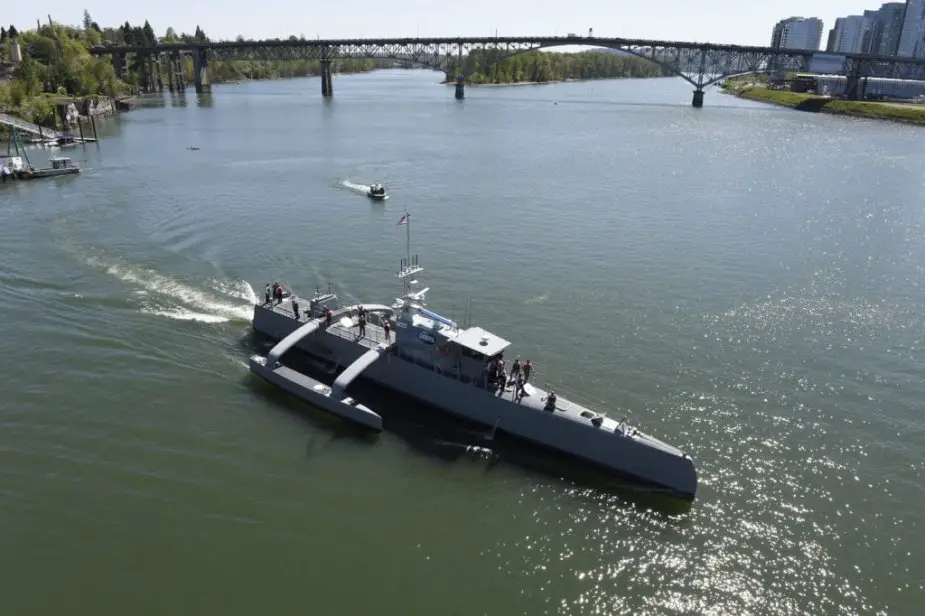Breaking news
DARPA is working on new unmanned ship concepts under NOMARS programme.
The Defense Advanced Research Projects Agency (DARPA) is developing two concepts of operations for unmanned ships and other watercraft, the agency’s acting director said July 30.
Follow Navy Recognition on Google News at this link
 DARPA, which developed the Sea Hunter USV, is developing two new concepts. (Picture source: U.S. NAVY / John F. Williams)
DARPA, which developed the Sea Hunter USV, is developing two new concepts. (Picture source: U.S. NAVY / John F. Williams)
DARPA, which successfully developed what is called the Sea Hunter autonomous unmanned surface vessel, now operated by the U.S. Navy, is doing more work on autonomy and other crew-less technology.
The US Defence Advanced Research Projects Agency (DARPA) is moving forward with its No Manning Required, Ship (NOMARS) programme with a broad agency announcement (BAA) released last week.
 A concept drawing of an autonomous unmanned surface vessel produced by Austal USA. DARPA has not named industry partners on its NOMARS project. (Picture source: Austal USA)
A concept drawing of an autonomous unmanned surface vessel produced by Austal USA. DARPA has not named industry partners on its NOMARS project. (Picture source: Austal USA)
The No Manning Required Ship (NOMARS) program seeks to design a ship that can operate autonomously for long durations at sea, enabling a clean-sheet ship design process that eliminates design considerations associated with the crew. NOMARS focuses on exploring novel approaches to the design of the seaframe (the ship without mission systems) while accommodating representative payload size, weight, and power.
NOMARS aims to challenge the traditional naval architecture model, designing a seaframe from the ground up with no provision, allowance, or expectation for humans at sea. By removing the human element from all ship design considerations, the program intends to demonstrate significant advantages, to include size, cost, at-sea reliability, survivability to sea-state, and survivability to adversary actions such as stealth considerations and resistance to tampering. The program also will strive for greater hydrodynamic efficiency via hull optimization without requirements for crew safety or comfort.





























